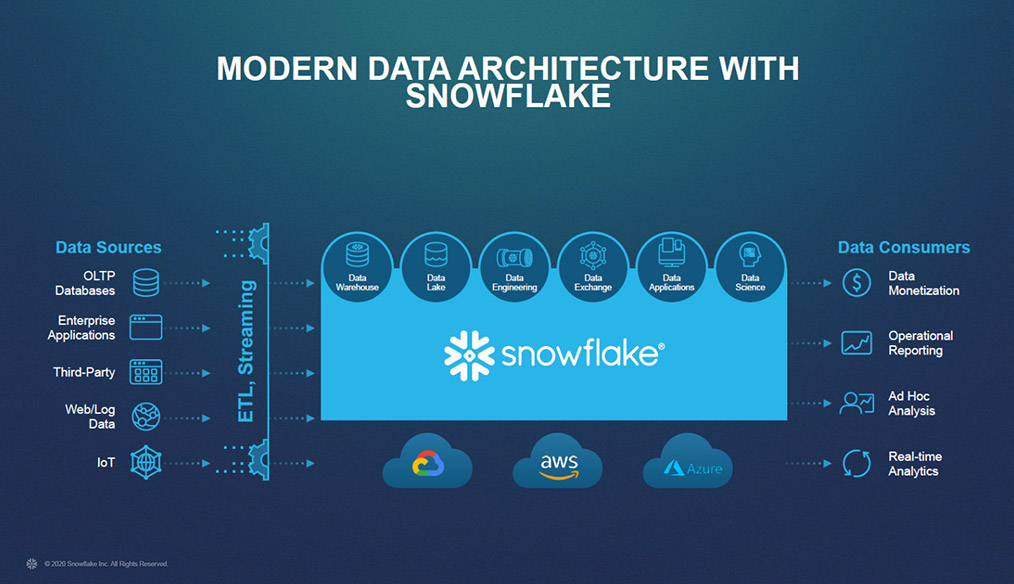
When it comes to designing data warehouse architecture for your business, there’s no single one-size-fits-all solution—it all depends on your unique business requirements.
So while the perfect data warehouse design may not exist, there are some key architecture decisions that can make it perfectly suited to create an optimal environment for your business, and help you achieve your goals.
When thinking about building a data warehouse and its architecture, there is a decision to be made whether you would like your data to be on-premise or in the cloud. These names are reasonably self-explanatory.
Cloud architecture means that your data is stored in a public cloud, with no physical infrastructure on-site. On-premise architecture is a more traditional model that sees your data warehouse located in physical servers, at your business or in a data center.
The decision could be based on several factors like

A cloud data warehouse solution provides a more flexible, and nearly infinite scalable option, when compared to an on-premise solution. It’s quicker to build, and requires less ongoing maintenance, freeing up your database administrator to focus on higher-value work.
Cloud databases tend to be SaaS offerings, which mean it reduces your setup and implementation costs. Your cloud provider will provide and maintain the storage and compute for you. They will also take care of regular upgrades to your database system, without needing to undertake it yourself.
Another benefit is that the Cloud database and its running is a business expense. As it’s an ongoing cost, cloud data warehouse implementation can be considered as opex, which means it can work as a regular business tax deduction. This is particularly useful if your business relies on regular funding rather than bulk, once-off investment injections.
These days, many workers expect a cloud data warehouse as a given. So if you’re in a forward-looking business, it can help to attract the right talent, and provide your staff with the tools and technology that improves retention.
Just because your data warehouse can be housed in the cloud, it doesn’t mean it needs to be.
For larger, more mature companies, an on-premise data warehouse solution can provide just as much power and agility as a cloud solution. Particularly for businesses that own their own data centre, or have access to one, it may make sense to take advantage of the existing on-premise architecture.
If your business is already operating with an on-premise environment where a lot of the business data sources are on premise, a lot of data resides on premise, some of the on-premise systems are legacy systems that are hard to reach by data integration tools and if a lot of technical debt has been built over the years that needs to be migrated it may make sense to have your data warehouse on-premise too.
However, typical drawbacks of having a data warehouse on premise are restrictions on scalability, performance, agility and data governance. It may also be harder to find and retain resources especially if the on-premise systems are legacy systems.
As the pace of business rapidly increases, a good data warehouse design needs to be robust. It needs to simplify your business’ data collection and interpretation, and make it as easy as possible to get the right data in front of the right people.
So when looking to build your data warehouse, there are some key data warehouse design best practices your business must follow.

Every business has different needs, so your data warehouse design should be based on the data requirements of your business users. It’s important that it integrates with your existing business processes and workflows, and aligns with your long-term goals.
During implementation, be sure to build in all the necessary business touchpoints that your teams need now—but also for the future. It’s all about understanding the technical requirements of your warehouse, and the questions it’s going to help your business answer.
The right data modelling can make all the difference in how your data warehouse operates. Your technicians need to be able to correctly structure your data sources and their subsequent representation in your warehouse, so that your users can access the right information.
Be sure to specify the correct OLAP requirements, to deliver the processing capability and data granularity your users need to deliver deeper business insight.
Related: You Planning Platform is not your Data Warehouse
Extract, Transform, Load (ETL), or Extract, Load, Transform (ELT)—which is right for your data warehouse design?
ETL is a more popular option for on-premise data architecture, as it transforms your data before it loads into your warehouse. This means that all preparatory work is already undertaken, so it’s ready to access when you need it. However, this process can take time.
These days, businesses demand real-time data. Better suited to cloud data warehouse architecture, ELT extracts data from your systems, loads it into your data lake, and then enables you to extract and transform the data directly from your data warehouse.
Here it’s combined with other systems and provides a more 360-degree view, allowing for real-time data transformation.
When designing your data warehouse, after your modelling and data transformation is detailed, the next step is designing the semantic layer. This layer of processing utilises your OLAP server to support your users’ questions, queries, and analytical requests.
In essence, it helps your warehouse make sense of your data, by determining its analytical processing capabilities. So it’s important that this layer operates smoothly and efficiently, reducing your time-to-analysis and removing friction in delivery.
With the right data warehouse design in place, the final step is to ensure the right reporting capabilities are in place that can deliver better insight to help drive your business. To achieve this, your warehouse administrator can create robust protocols and rules that designates your users, assigns permissible access, and details the delivery methods for your data.
Here, you can structure your reporting interfaces and dashboards, to arrive at the usability expected in a modern data warehouse.
We ensure you design the data warehouse solution that works for your business, with all the necessary capabilities to sets you up for a successful future. Contact us today to discuss your requirements, and see how we can help you create a data warehouse that’s perfect for your needs.
Copyright © Tridant Pty Ltd.